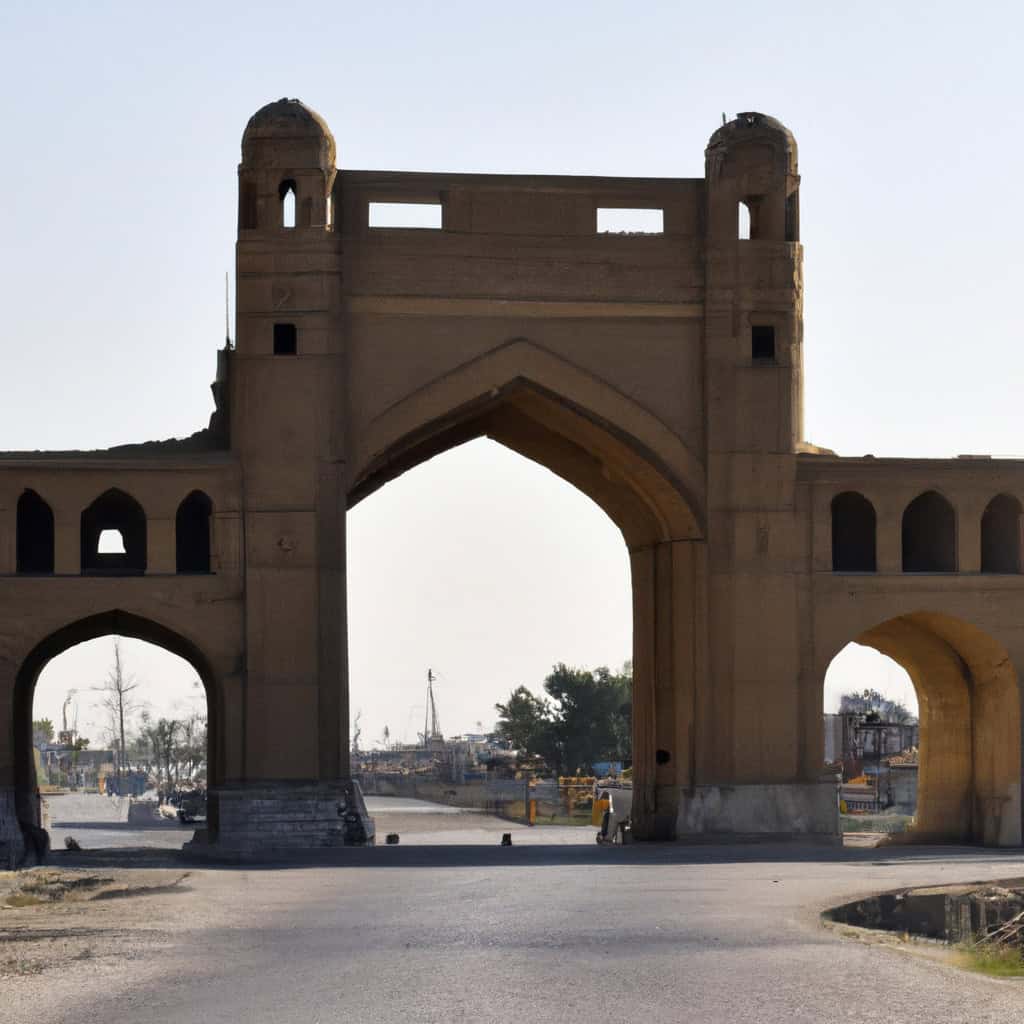Shkarpur Darwaza Gate in Kandahar City is one of the many fascinating sites that both foreign visitors and local tourists can explore while they visit Afghanistan and exploring Kandahar Province. The monumental gate forms a key part of the city’s fortifications, standing tall as a symbol of a bygone era when walls and gates were central to any city’s security and status. Its historical and cultural significance is deeply embedded in the annals of Afghan history, offering us a window into the enriching past of this region.
Shkarpur Darwaza Gate Most Important Events
- Strategic Fortification in The 18th Century: Shkarpur Darwaza Gate was a crucial part in the city’s defense system during the power struggles of the 18th century. Its fortifications played significant roles in repelling invaders and asserting the city’s autonomy.
- Capture of Kandahar In World War I: This gate turned into a symbol of resilience and strategic importance during World War I when Kandahar fell under the influence of external powers. Despite environmental challenges, the Shkarpur Darwaza Gate remained unbroken.
- Restoration in the 20th Century: Recognizing the historical and symbolic significance of the Shkarpur Darwaza Gate, extensive restoration work was carried out in the mid-20th century, allowing future generations to visit and appreciate this architectural marvel.
History of Shkarpur Darwaza Gate in Kandahar City
The Shkarpur Darwaza Gate dates back to the 18th century when Kandahar held strategic significance as a major city in Afghanistan. The fortifications were initially built to deter invaders and internal rebellions. Over the years, the gate has witnessed various mathematically significant events, shaping the history of the city and its people.
During World War I, Kandahar, along with the Shkarpur Darwaza Gate, were important locations as they were critical for controlling the region. Despite the turbulent times, the gate remained an iconic symbol of the resilience and enduring spirit of the people of Kandahar.
Efforts to conserve and restore the Shkarpur Darwaza Gate were initiated in the mid-20th century. These efforts ensured the preservation of this timeless structure for the future generations. The meticulous restoration work highlights the architectural brilliance and design aesthetics of the era, thereby bringing alive some of the glorious chapters in Afghan history.
Why It’s Important to Afghan History
The Shkarpur Darwaza Gate has been an enduring symbol of Afghan history and heritage. Its resilient structure is symbolic of the invincible spirit of the Afghan people, who, despite enduring the ravages of time and political turmoil, have kept their rich history alive.
The gate also embodied the architectural finesse and infrastructural progress of the age. The richness of its design and the sophistication of its structure serve as an important testament to the skill and craftsmanship of the builders and the architectural significance of Kandahar city during the era.
Why to Visit Shkarpur Darwaza Gate
Visiting the Shkarpur Darwaza Gate is like walking through the pages of history. The majestic gate captivates with its grandeur, while the old walls resonate with tales of the past. The scenic surroundings fused with the tranquil quietness create a picturesque setting that enchants every visitor.
The gate, with its shot towers and fortified ashlars, presents a remarkable representation of traditional Afghan architecture. Each detail narrates stories of a bygone era, offering an immersive experience to history buffs and architecture enthusiasts alike.
- The architectural grandeur of the gate
- The historical significance of the walls and fortifications
- The panoramic view of the city from atop the gate
- The intricate design and details of the gate
- The peaceful and serene atmosphere around the gate
The Shkarpur Darwaza Gate is located in the northern part of Kandahar City. It’s best to visit during the cooler months of October to April.
Cultural & Tourist Significance
The Shkarpur Darwaza Gate carries immense cultural significance. For the locals, it is a symbol of their resilience and a living testament of their glorious history. The gate forms the backdrop of many local folklores and stories that have been passed down through generations.
For tourists, the gate offers a unique blend of history, culture, and architecture. It is an iconic symbol that encapsulates the spirit of Kandahar and its people. With the growing interest in historical tourism, the gate has become a must-visit landmark in the city. It is not only a photogenic site but also offers an opportunity for immersive learning about the Afghan history and culture.
The gate also plays a significant role in promoting tourism in the Kandahar city. Recognizing the gate’s historical and architectural significance, various tours and sightseeing packages include the Shkarpur Darwaza Gate, making it accessible to tourists and ameliorating the city’s global image.
Interesting Facts
One of the interesting facts about the Shkarpur Darwaza Gate is that it is one of the few structures in the city that has stood the test of time. Despite the political upheavals and natural calamities, the gate’s structure remains intact, narrating tales of its resilient past.
There is a local folklore associated with the Shkarpur Darwaza Gate. It tells the tale of a legendary warrior who found refuge within its walls during a fierce battle. Since then, the gate has come to represent courage and resilience in local culture.
Another lesser-known fact about the Shkarpur Darwaza Gate is that the bricks used in its construction were specially created using local materials and techniques, showcasing the finesse and mastery of builders of that era. This unique construction method contributes significantly to the gate’s endurance.
In conclusion, the Shkarpur Darwaza Gate is not only a historical monument but also a symbol of collective identity and heritage. Its walls echo the stories of a profound past, inviting every visitor to engage with the vibrant history and culture of Afghanistan. A visit to this historical monument is sure to leave one with a deep understanding and appreciation of this captivating region’s history, culture, and traditions.

